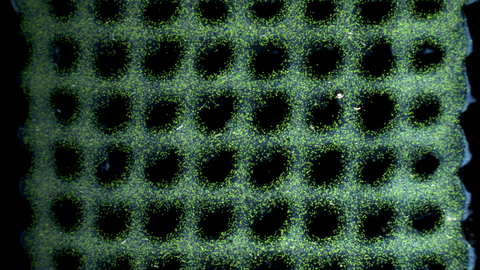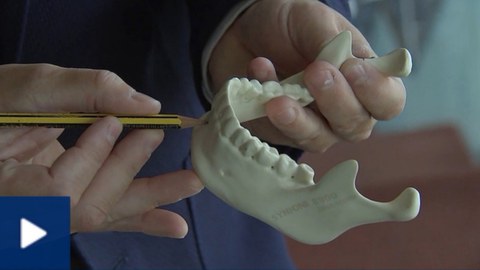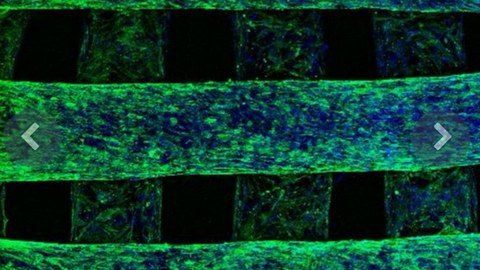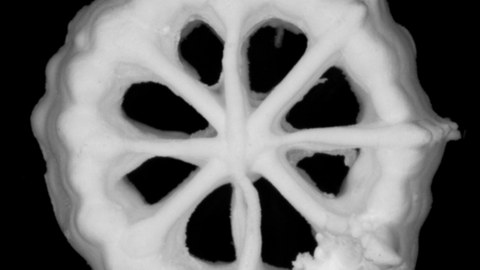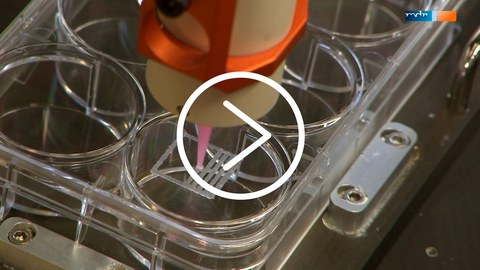Biofabrication
3D printing of cells and human tissue

Cell laden construct, fabricated by 3D plotting
3D printing is a fascinating technology, suitable for fabrication of 3D constructs and implants. At the Centre for Translational Bone, Joint and Soft Tissue Research, we are focusing on extrusion-based 3D printing, called 3D plotting.
Cooperations
For our work we are utilising BioScaffolders from GeSiM GmbH, located close to Dresden.
At the beginning we mostly worked on development of novel pasty biomaterials, suitable for 3D plotting under mild conditions, namely a calcium phosphate cement (in cooperation with InnoTERE GmbH), bioglass-based composite materials and a variety of biopolymer blends.
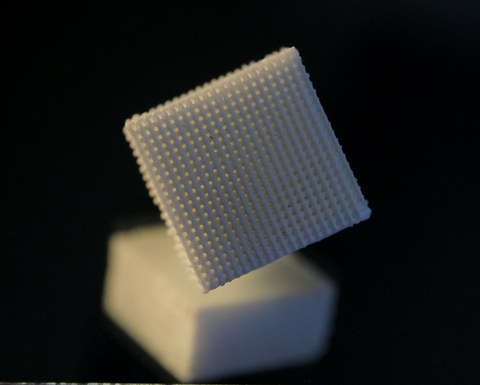
3D plotted calcium phosphate cement scaffold
One significant achievement was the combination of a calcium phosphate cement and an alginate-based biopolymer blend within one scaffold. Another development of our group was the fabrication of hollow biopolymeric strands and porous 3D scaffolds thereof.
Furthermore, we have successfully started to include living cells (e. g. human MSC) in the plotting process to create directly living artificial tissue engineering constructs of clinically relevant dimensions. Recently, we have coined the phrase "green bioprinting" for biofabrication of constructs, containing live microalgae (in collaboration with the Chair of Bioprocess Engineering of TUD). This novel method could be of great importance for a variety of biotechnological processes.

Algae-laden alginate scaffolds, plotted in a 90° structure
An overview of our publications on 3D plotting and bioprinting can be found here and popular science publications (partly in German) are shown below.


